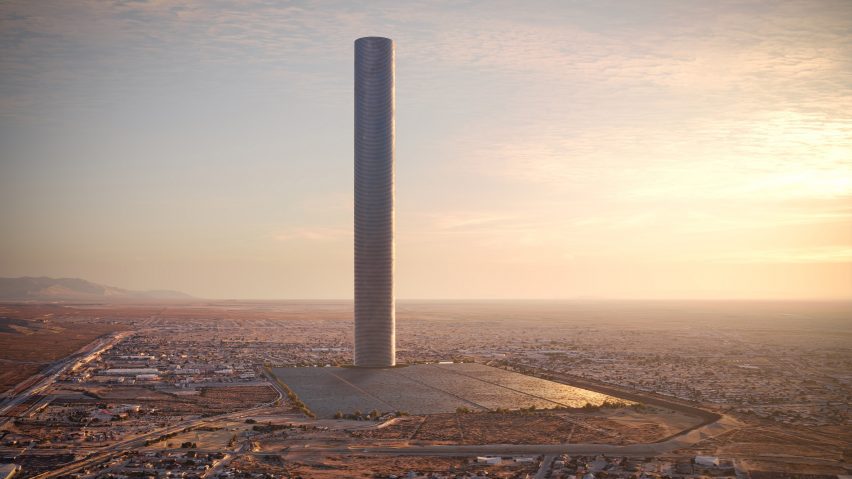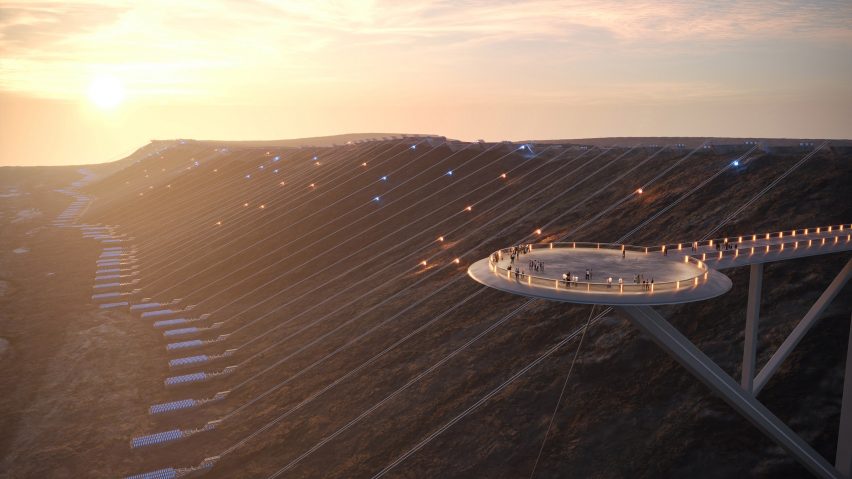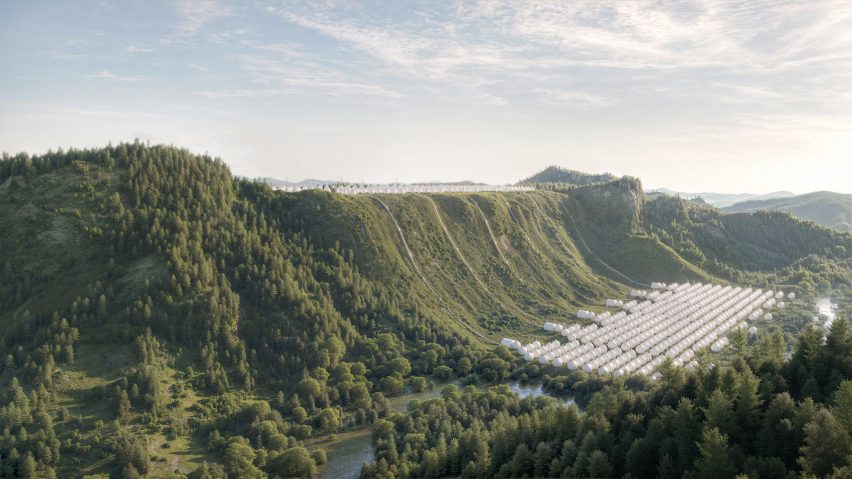American studio SOM has partnered with energy storage company Energy Vault to design four schematic sustainable energy storage systems, including integrating the technology into supertall skyscrapers.
SOM worked on four potential systems for Energy Vault’s G-Vault gravity-based storage solutions. Two designs feature integration into tall buildings and the other spread out over a landscape.
Called EVu, EVc, EVy, and EV0 each of the four schemes makes use of gravity energy storage systems (GESS), which use the force of gravity to generate electricity by lifting and then dropping a weight.
Both EVu, which is a tower design, and EVy which is incorporated into a natural landscape, use solid weights, while the second EVc tower design and EVo use hydropower.

When integrated into tall buildings, these systems can maximize sustainability, accelerate carbon payback of building construction, and lower the levelized cost of energy consumption,” said SOM.
“They can also bring sustainable energy storage to natural landscapes with minimal environmental impact.”
A render of EVu has a tall, slender structure towering over an urban landscape. Its interior technology uses a system of weights that move upwards via a pulley system during low-energy needs, and drop when there is more demand from the surrounding electricity grid to produce power.
The system is designed to generate power for both the building itself, as well as for neighbouring structures. According to the team, it will also accelerate carbon payback, or offset the emissions produced by construction quicker than the average build.

“EVu is a superstructure tower design and enables GESS integration into tall buildings through the use of a hollowed structure with heights over 300 meters, and up to 1,000 meters tall,” said the team.
“This innovative design will, for the first time in building construction and operation history, enable a carbon payback within accelerated timeframes of 3-4 years.”
Alternatively, the cylindrical EVc scheme uses a “modular water-based system” as an energy source and is the first to do so according to the team.
“EVc for the first time enables the deployment of large-scale pumped hydro energy storage systems integrated within tall building structures using a modular water-based system,” said the team.
Its cylindrical design also optimizes the tower for protection against wind and seismic events.
Both EVu and EVc are designed to hold mixed residential programming.
EVy and EV0 are spread out over a landscape, with one portion of the system at a lower level and the other at a higher.
Here, water and weights are stored at the higher level, until energy is needed and both flow downhill to generate power for electricity.

A render of EVy shows multiple docks that contain weights lined up along the bottom and top of a valley. Cables run vertically between them and pass the weights back and forth during the process.
EV0 uses hydropower to generate electricity, where water is stored in ‘Water Tree’ pods, which are prefabricated “low-cost fabric vessels” that provide an alternative to concrete infrastructure more commonly used.
“EV0 allows for all of the technical and economic benefits of traditional pumped hydro storage, while eliminating negative consequences associated with concrete production and disruption to existing wild-life eco-systems,” said the team.
This partnership with Energy Vault is a commitment not only to accelerate the world’s transition away from fossil fuels, but also to explore, together, how the architecture of renewable energy can enhance our shared natural landscapes and urban environments,” said SOM partner Adam Semel .
Other projects that explore renewable energy are floating mechanisms that gather energy from the motion of water and a 300-metre-high offshore windcatcher screen that could produce energy for 80,000 homes.
The images are courtesy of Business Wire by Energy Vault Holdings, Inc.

